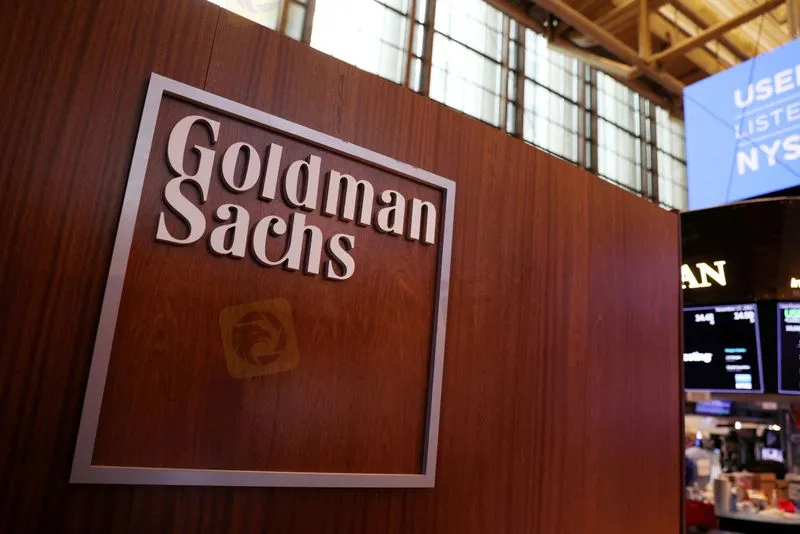简体中文
繁體中文
English
Pусский
日本語
ภาษาไทย
Tiếng Việt
Bahasa Indonesia
Español
हिन्दी
Filippiiniläinen
Français
Deutsch
Português
Türkçe
한국어
العربية
Goldman Sachs cuts S&P 500 forecast to under 5,000 as inflation worsens
Abstract:Goldman Sachs has tempered its outlook for the S&P 500 index, expecting it to stay below the 5,000 mark this year as rising inflation threatens to derail a nascent recovery in the U.S. economy.

Goldman Sachs has tempered its outlook for the S&P 500 index, expecting it to stay below the 5,000 mark this year as rising inflation threatens to derail a nascent recovery in the U.S. economy.
The revised forecast of 4,900 point is a near 4% cut from the brokerage's previous estimate, but is still 11% above the S&P 500's Friday close of 4,418.64.
The benchmark index has come under pressure since the beginning of the year, shedding nearly 7.3%, as a host of worries ranging from interest rate hikes to tensions in Ukraine has turned investors skittish and markets volatile.
“Uncertainty abounds regarding the path of inflation and Fed policy,” Goldman Sachs economists said in a note dated Friday.
U.S. consumer prices rose solidly in January, leading to the biggest annual increase in inflation in 40 years. As inflation continues to overshoot the U.S. Federal Reserve's 2% target, the U.S. central bank is expected to take a more hawkish stance by raising interest rates in March.
Goldman economists are expecting seven interest rate hikes in 2022, but at the same time see an upside to U.S. equities as prices rise alongside earnings.
“The majority of earnings growth in the next two years will come from sales growth, with only limited net profit margin expansion,” Goldman economist David Kostin said.
For more forex news, please download WikiFX - the Global Dealer Regulatory Inquiry APP.
Disclaimer:
The views in this article only represent the author's personal views, and do not constitute investment advice on this platform. This platform does not guarantee the accuracy, completeness and timeliness of the information in the article, and will not be liable for any loss caused by the use of or reliance on the information in the article.
Read more

This Economic Indicator Sparks Speculation of a Japan Rate Hike!
The latest data shows that Japan’s base wages in November rose by 2.7% year-on-year, marking the largest increase in 32 years, fueling speculation about a potential BOJ rate hike, but Governor Kazuo Ueda’s dovish remarks in December have shifted market expectations toward a potential delay in policy adjustments.

Rising U.S. Corporate Bankruptcies Deepen Economic Concerns
In 2024, 686 U.S. companies filed for bankruptcy, marking the highest number since 2010.

Turkey Resumes Rate Cuts Amid Easing Inflation
Turkey’s inflation has eased, prompting the central bank to resume interest rate cuts. Striking a balance between economic recovery and inflation control has become a critical focus. However, significant challenges lie ahead, as Turkey continues to navigate complex economic conditions.

New Year, New Surge: Will Oil Prices Keep Rising?
As of the writing of this article (January 2), oil prices stand at $71.88 per barrel. Investors need to continue monitoring whether the supply and demand dynamics will continue to push prices further up.
WikiFX Broker
Latest News
Bitcoin in 2025: The Opportunities and Challenges Ahead
BI Apprehends Japanese Scam Leader in Manila
Join the Event & Level Up Your Forex Journey
Is There Still Opportunity as Gold Reaches 4-Week High?
Bitcoin miner\s claim to recover £600m in Newport tip thrown out
Good News Malaysia: Ready for 5% GDP Growth in 2025!
How to Automate Forex and Crypto Trading for Better Profits
Breaking News! Federal Reserve Slows Down Interest Rate Cuts
Beware: Pig Butchering Scam Targeting Vulnerable Individuals
This Economic Indicator Sparks Speculation of a Japan Rate Hike!
Currency Calculator






